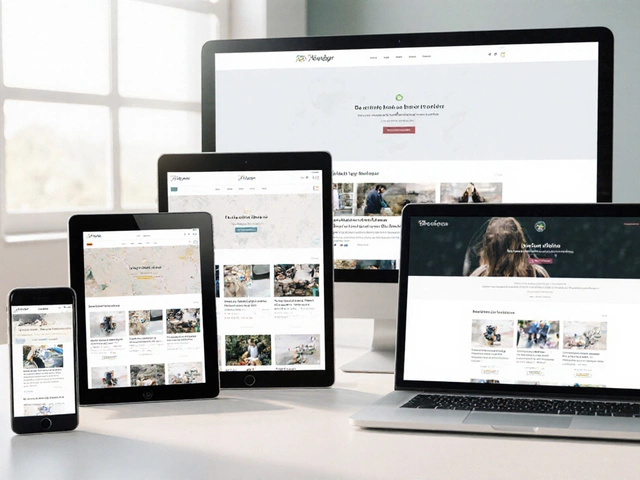UX Designer Skill Progress Tracker
How Ready Are You for a UX Career?
Assess your current skill level across key UX areas. Get personalized recommendations based on your progress.
Your Next Steps
Based on your current skill level:
When you set your sights on becoming a UX Designer - a professional who shapes digital experiences to be useful, usable, and delightful - the path can feel both exciting and overwhelming. You’re not just learning new software; you’re adopting a mindset that puts real people at the heart of every product decision. Below is a practical roadmap that takes you from zero knowledge to landing that first role, complete with skill checkpoints, learning resources, portfolio tips, and job‑search hacks.
What a UX Designer Actually Does
A UX Designer focuses on understanding user needs, crafting wireframes, testing prototypes, and iterating until the experience feels intuitive. In day‑to‑day work you’ll toggle between User Research, sketching low‑fidelity Wireframes, building interactive Prototypes, and collaborating with developers to ensure the final product matches the design intent.
Core Skills Every Aspiring UX Designer Needs
- Empathy & User Research: Knowing how to conduct interviews, surveys, and contextual inquiries to uncover real pain points.
- Information Architecture: Organising content so users can find what they need without mental friction.
- Interaction Design: Defining how users move through a product - think button states, navigation flows, and micro‑interactions.
- Visual Design Basics: Understanding typography, colour theory, and layout to make interfaces both beautiful and readable.
- Prototyping & Usability Testing: Turning sketches into clickable models and validating them with real users.
- Collaboration Tools: Mastering Figma, Sketch, or Adobe XD to share work with teams in real time.
These skills aren’t learned overnight, but you can stack them one at a time. Start with empathy - everything else builds on a solid understanding of the user.
Choosing the Right Learning Path
There’s no one‑size‑fits‑all route. Below are three common pathways, each with pros, cons, and suggested resources.
- Self‑Study + Free Resources
- Read the classic Don’t Make Me Think by Steve Krug.
- Follow the free UX Design courses on Coursera, edX, or the Interaction Design Foundation.
- Subscribe to newsletters like Nielsen Norman Group’s weekly roundup.
- Structured Online Bootcamps
- Google UX Design Professional Certificate (Coursera) - 8 months, 6‑hour weekly commitment.
- CareerFoundry’s UX Design Programme - mentor‑driven with a job‑ready portfolio.
- Full‑Time University Courses
- UK’s BA (Hons) in Interaction Design - 3‑year degree, strong research focus.
- Online MSc in Human‑Computer Interaction - useful for those wanting a research edge.
Pick the option that matches your schedule, budget, and learning style. If you’re juggling a job, a part‑time bootcamp or self‑study works best.
Building a Portfolio That Gets Noticed
Your portfolio is the single most important piece of the job‑search puzzle. Recruiters skim portfolios in seconds, so make each case study crystal clear.
- Choose 3-4 Strong Projects: Include a mix of personal, academic, and freelance work. Quality beats quantity.
- Show the Process, Not Just the Final Screens: Start with research goals, show user personas, sketch iterations, and end with usability test results.
- Quantify Impact: Whenever possible, add metrics - “Reduced checkout friction by 22% after redesign”.
- Host It Online: Use platforms like Behance, Dribbble, or a custom domain with Webflow. Keep the site lightweight and mobile‑friendly.
Tip: include a short “About Me” that highlights your empathy skills and any cross‑functional experience (e.g., graphic design or front‑end development).
Choosing the Right Design Tool: A Quick Comparison
| Tool | Price (per month) | Platform | Collaboration | Learning Curve |
|---|---|---|---|---|
| Figma | Free‑starter / $15 Pro | Web, macOS, Windows | Realtime multi‑user | Low - intuitive UI |
| Sketch | $99 (annual) | macOS only | Via plugins (e.g., Abstract) | Medium - mac‑centric |
| Adobe XD | Free tier / $9.99 Single App | macOS, Windows | Coediting in Creative Cloud | Low - familiar Adobe UI |
If you’re just starting out, Figma’s free tier gives you everything you need - cloud storage, plugins, and an active community.

Landing Your First UX Role
Even with a polished portfolio, breaking into the field can feel like a job‑search maze. Here’s a checklist to keep you moving forward.
- Tailor Your Resume: Highlight research methods, tools, and any measurable outcomes.
- Network Strategically: Join UX Meetups (e.g., Leeds UX Collective), attend online design sprints, and participate in LinkedIn groups.
- Apply Smartly: Target junior or “UX Design Intern” roles, and use your portfolio links in the cover letter.
- Prepare for the Design Interview: Expect a take‑home assignment - often a redesign of a known app. Follow a clear process: research, sketch, prototype, test.
Don’t be discouraged by rejections; each interview is practice for the next. Keep iterating on your portfolio based on feedback.
Continuous Growth - From Junior to Senior
UX design is a lifelong learning game. After you land that first job, aim for these milestones:
- Master advanced research techniques like diary studies and eye‑tracking.
- Lead design sprints and mentor junior designers.
- Specialise in a niche - e.g., healthcare UX, voice‑interface design, or accessibility compliance.
- Earn certifications such as NN/g UX Certification or HFI Certified Usability Analyst.
Remember, the core of UX stays the same: empathise, prototype, test, repeat.
What educational background do I need to become a UX designer?
There’s no mandatory degree. Many designers come from graphic design, psychology, or computer science. What matters most is a strong portfolio and proven research skills. You can also earn credibility through online bootcamps or certifications.
How long does it usually take to land a junior UX role?
If you study part‑time and build a solid portfolio, most people land a junior position within 4‑6 months of focused effort. Full‑time bootcamps often promise job placement within 3‑4 months post‑graduation.
Which design tool should I learn first?
Figma is the industry‑standard for collaboration and offers a generous free tier. It works on any OS via the browser, making it ideal for beginners.
Do I need to code to be a UX designer?
Coding isn’t a core requirement, but knowing HTML/CSS basics helps you communicate with developers and understand feasibility constraints.
What’s the best way to showcase my UX process?
Structure each case study as: problem → research → insights → ideation → prototype → testing → results. Include screenshots, user personas, and any metrics that prove impact.





